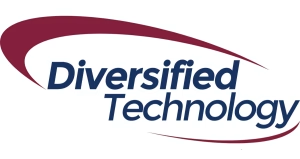Municipal utilities and public works departments rely on efficient work order management to maintain infrastructure, address service requests, and allocate resources effectively. Many organizations still rely on outdated paper-based systems, leading to inefficiencies, errors, and lost productivity. Transitioning to work order software can streamline operations, improve communication, and enhance service delivery. However, choosing the right solution requires careful consideration of various factors. This guide provides essential advice for managers looking to implement a modern work order software solution.
1. Identify Key Needs and Requirements
Before selecting work order software, it is crucial to assess your organization’s specific needs. Consider the following questions:
- What types of work orders does your department handle (e.g., maintenance, repairs, inspections, installations)?
- How many employees will use the software, and what are their roles?
- Do you need mobile access for field crews?
- What reporting and analytics capabilities are necessary?
- Should the software integrate with existing systems such as GIS, asset management, or financial software?
By clearly defining your requirements, you can narrow down options and select a system that aligns with your operational goals.
2. Prioritize Ease of Use and Accessibility
Adopting new technology can be challenging, particularly for teams accustomed to paper-based workflows. The chosen work order software should have an intuitive interface that minimizes training time and encourages adoption. Features that enhance usability include:
- A dashboard displaying active work orders and priorities
- Simple navigation with minimal clicks to create and update work orders
- Customizable fields and workflows to match existing processes
- Cloud-based access for remote work and mobile-friendly applications
3. Ensure Scalability for Future Growth
Your department’s needs will evolve over time, so it is essential to invest in work order software that can scale with your organization. Consider:
- Can the software handle an increasing number of work orders and users?
- Does it support multiple departments or divisions within your municipality?
- Are there add-on modules available for expanded functionality?
- What are the upgrade policies and associated costs?
Choosing scalable work order software ensures that your investment remains viable in the long term, preventing the need for frequent replacements.
4. Evaluate Integration Capabilities
Work order software should seamlessly integrate with other municipal systems to enhance efficiency and data accuracy. Key integrations to look for include:
- GIS (Geographic Information Systems): Enables mapping of work orders and assets for better resource allocation.
- Asset Management Systems: Links work orders to asset maintenance histories and lifecycle tracking.
- Customer Relationship Management (CRM): Streamlines service request handling and citizen engagement.
- Accounting and Financial Systems: Ensures proper budgeting and expense tracking.
A well-integrated system reduces redundant data entry, improves accuracy, and enhances interdepartmental collaboration.
5. Assess Reporting and Analytics Features
Data-driven decision-making is crucial for municipal utilities and public works. The selected work order software should provide robust reporting and analytics capabilities, such as:
- Work order completion rates and efficiency metrics
- Cost tracking and budget forecasting
- Predictive maintenance insights
- Customizable dashboards and automated reports
Access to real-time data allows managers to identify trends, optimize resource allocation, and justify funding requests to stakeholders.
6. Consider Implementation and Training Support
Transitioning from a paper-based system to work order software requires careful planning and staff training. Evaluate software providers based on:
- Implementation timelines and support services
- Availability of in-person or online training sessions
- Helpdesk support and user documentation
- Community forums or user groups for best practices sharing
A well-supported implementation process minimizes disruptions and ensures staff members feel confident using the new system.
7. Compare Costs and Return on Investment (ROI)
While budget constraints are always a consideration, choosing work order software based solely on price can lead to costly inefficiencies. Instead, assess the total cost of ownership, including:
- Licensing fees (per-user or enterprise-wide)
- Implementation and training costs
- Subscription vs. one-time purchase pricing models
- Ongoing maintenance and upgrade expenses
Additionally, factor in the potential cost savings from increased efficiency, reduced paperwork, improved compliance, and better asset management.
8. Research Vendor Reputation and User Reviews
Selecting a reliable software vendor is just as important as choosing the right software features. Before committing, conduct thorough research:
- Read user reviews and testimonials from other municipalities.
- Request references and speak with current customers.
- Investigate the vendor’s track record in supporting municipal clients.
- Assess the frequency of software updates and new feature releases.
A reputable vendor with a strong municipal focus ensures long-term reliability and support for your department’s needs.
9. Plan for a Smooth Transition
Successfully implementing work order software requires strategic planning. Steps to facilitate a seamless transition include:
- Establishing a clear timeline with milestones
- Assigning internal champions to lead the implementation
- Running a pilot program before full deployment
- Gathering feedback and making necessary adjustments
A phased approach minimizes disruptions and allows teams to adapt gradually to the new system.
Conclusion
Modernizing municipal work order management with work order software improves efficiency, reduces paperwork, and enhances service delivery. By carefully assessing needs, prioritizing usability, considering scalability, ensuring integration, and evaluating costs, municipal utility and public works managers can select a solution that aligns with their goals. With the right planning and vendor partnership, the transition from a paper-based system to a digital work order platform can be a smooth and highly beneficial process.

